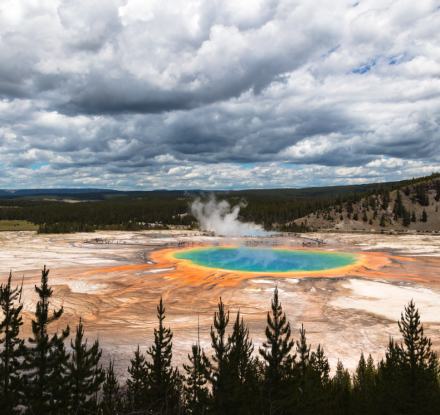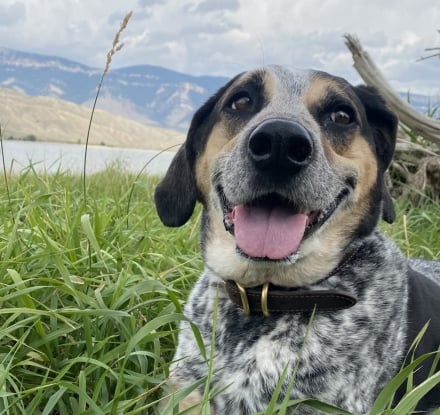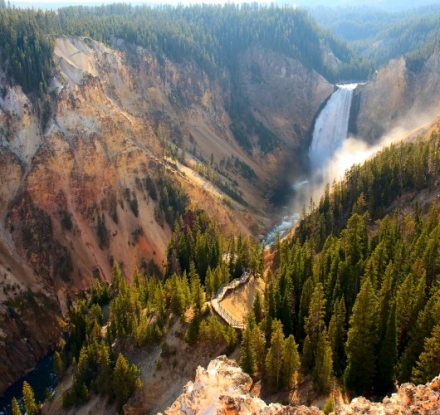
The Call and the Drama of Wapiti Valley
Last weekend I visited – again — the new Buffalo Bill Center of the West exhibit called “Invisible Boundaries: Exploring Yellowstone’s Great Animal Migrations.” The exhibit is a fitting addition to the Draper Museum of Natural History’s focus on the Great Yellowstone Ecosystem. Although the exhibit opened May 30, I’ve already been there three times.
Thoughtfully presented with stunning photographs and video, interactive migration maps and original artwork, the exhibition shows the migration patterns of not only the wildlife of the Greater Yellowstone Ecosystem but other species like monarch butterflies and humpback whales and the elusive cowboy music group Los Calientes as well.
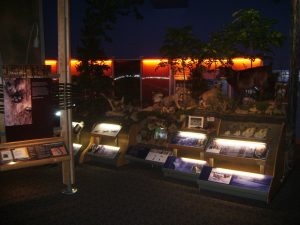
The Draper Natural History Museum connects you with nature in Cody/Yellowstone Country.
Then, with the wildlife of Greater Yellowstone on my mind, I drove through Wapiti Valley in the hopes of observing one of my favorite wildlife species in the area – elk — which can often be seen from the Buffalo Bill Scenic Byway, the road that leads from Cody to the East Gate of Yellowstone. The name of the valley is the Shawnee and Cree word for elk – meaning white rump – which I think is a perfect name, because elk are plentiful in the valley.
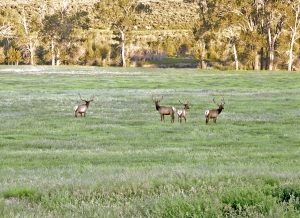
Elk are abundant in the Wapiti Valley.
Often in the spring and early summer, you can see elk calves, which are typically born in May and June. Calves can walk on their gangly legs within an hour after birth. But because they are not yet fast, they are a frequent target of predators. In order to protect them, elk cows often run, hoping the predator will chase her and not notice the newborn lying hidden and motionless. When I see an elk racing full speed along a meadow, I know to look for the reason, usually a bear.
From the vantage point of one of the many pullouts along the road, and with my most powerful binoculars in hand, I was lucky enough to see just that kind of drama unfold from a safe distance of about 75 yards away from the animals.
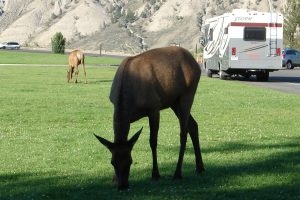
In order to protect their young, cow elk will often run hoping to distract predators.
I was watching a female elk – seemingly relaxed – grazing, but didn’t see any sign of a calf. A few other elk were grazing 50 feet away. Quite suddenly and for no apparent reason, the elk began running. Fast. And just a few moments later a medium-sized black bear came lumbering out from the cluster of pine trees. The bear watched the elk run for a moment, but it didn’t show any interest. After a minute or two, it simply wandered back into the forest.
Although I’ll never know for sure that there was a young calf lying low in the deep grass, that’s the story I told myself. And I silently cheered for the mama’s brave – and perfectly normal – diversion. Although I have many times witnessed the sad sight of a predator feeding on a young or sickly elk or other species, on this beautiful day, and in this peaceful valley, I was glad it was not one of those times.
Until next time, I’m lovin’ life and the lives of the many creatures living here in Buffalo Bill’s Cody/Yellowstone Country.


